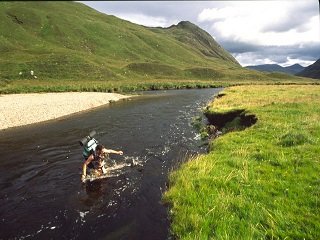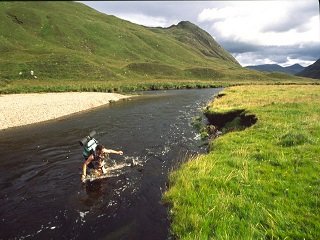 While majestic and teeming with untouched, natural beauty, the wilderness is no picnic. Nature is a powerful force, and if you aren’t prepared for the potentially dangerous aspects of it, the consequences can be severe. Learning to recognize the signs of danger and adjust your hike accordingly is a valuable skill that can save your life one day. Today, I’ve detailed such signs to better prepare you for your next hike to the more rugged regions of the country.
While majestic and teeming with untouched, natural beauty, the wilderness is no picnic. Nature is a powerful force, and if you aren’t prepared for the potentially dangerous aspects of it, the consequences can be severe. Learning to recognize the signs of danger and adjust your hike accordingly is a valuable skill that can save your life one day. Today, I’ve detailed such signs to better prepare you for your next hike to the more rugged regions of the country.
One example of potential danger is predators. If you stumble upon partially eaten carcasses—especially any that are covered with loose soil or leaves—it can spell danger. Predators often store their half-eaten kills, but will linger nearby and defend it from intruders. Should you find a carcass, the best thing to do is back away slowly—don’t run—and put at least 100 yards between you and the carcass (preferably upwind) as you continue.
On the subject of predators, long scratches on tree trunks or rocks signal the presence of male black bears marking their territory. Staying together and being as loud as possible is the best thing to do in this situation. Also, if you’re forced to camp in the area, cook downwind and far from your campsite.
Aside from animals, nature can bring forth some bad weather. If you notice an increase in humidity and a loss of visibility in the distance, it usually means there’s a storm on its way. Other signs—strong winds, temperature changes, and cloud build-up—will confirm this. When this happens, do your best to retreat to lower terrain as soon as possible; don’t wait until you see lightning or hear thunder. By then it might be too late.
Your ears can be useful for more than taking in the soothing serenade of the wind in the trees or the calls of birds. They can warn you of danger, as well. If you hear a dull roar and notice a decrease in visibility near a stream or river, it’s a sign that rapids or a waterfall is near. Walk downstream to check out the situation before continuing on your trail. If you must cross, look for wide, shallow portions of the river or cross just below the rapids.
Keep your senses alert while hiking and learning to recognize and adjust your hike when the signs of potential danger present themselves will become second nature. We all love that there are still spans of wilderness untouched by civilization, but with that ruggedness comes uncertainty and risk. Be smart and be safe while you’re on the trail in order to ensure you return home safely!








